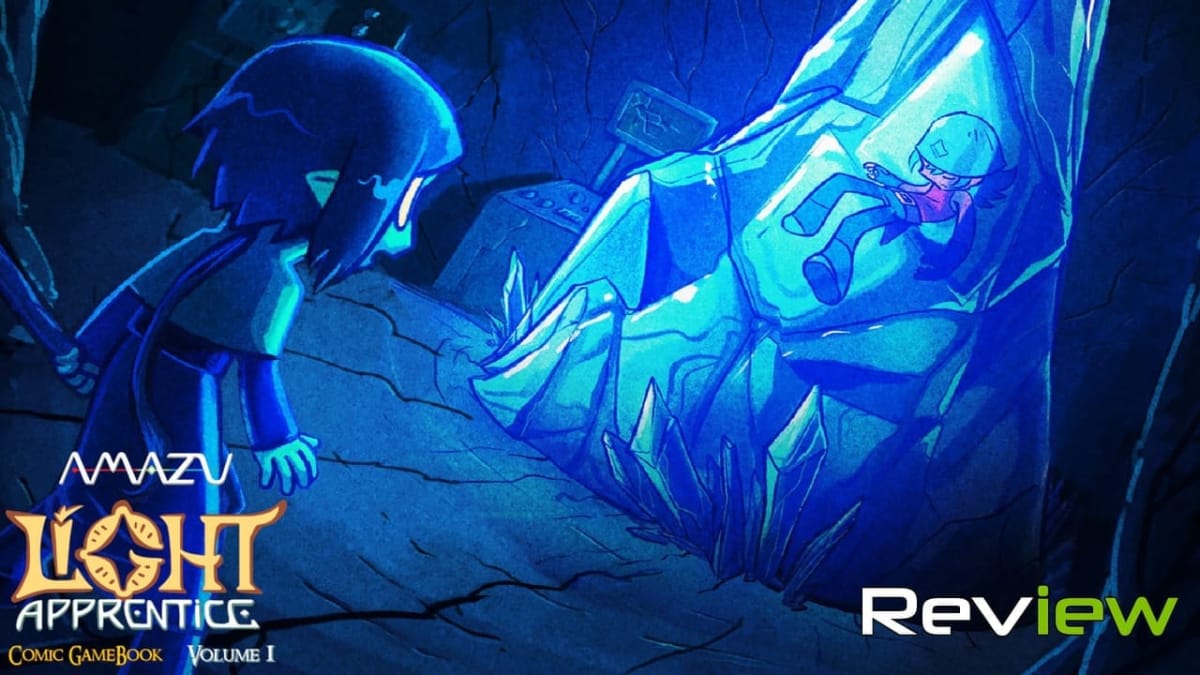Light Apprentice - The Comic Book RPG is a charming package on the surface. Its approach to potential customers is spearheaded by its comic-book-like aesthetic, which admittedly has its appeal. The developers at Danish studio Amazu Media, who strive to create “meaningful entertainment,” already released the title on both iOS and Android, and it’s looking to have Steam be the newest home for its first game. Although the developers have taken some steps in the right direction to give it a lot of impact, Light Apprentice ultimately fails to leave a positive impression on PC.
The game starts with Tlob’s journey to awaken the five Light Apprentices and stop the planet of Ethenia from dying, because only their energy can be used save the world. The game is set to have three volumes, but only the first has been released, consisting of four chapters altogether. Chapter One begins with Tlob awakening Nate, a typical heroic protagonist who fights to protect people from oppression. It’s been 300 years since he was last awake, and he’s troubled by this new world plagued with war and destruction brought on by the Yhrosian empire. The two set out to find the remaining apprentices to fix his new reality.
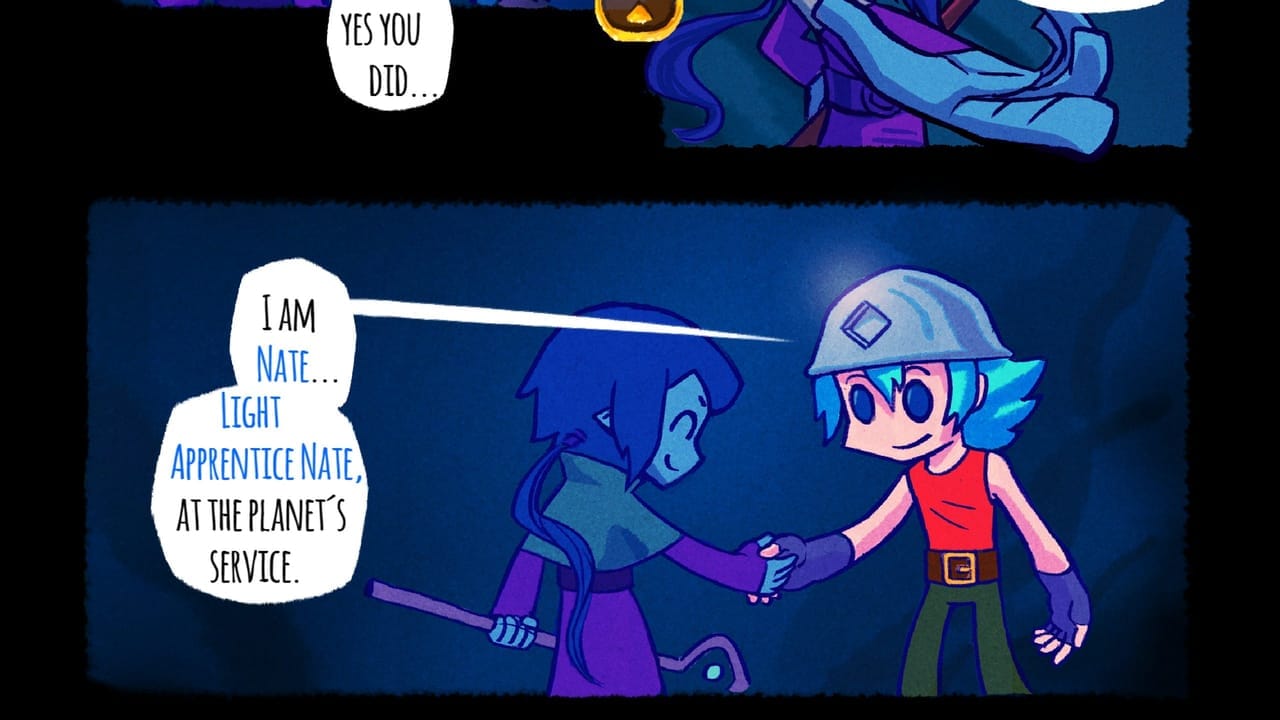
The most striking aspect of the game is its cute art style, which stays very faithful to the comic book aesthetic. All the cutscenes happen one panel at a time, with speech bubbles only popping up as you click through. Within each cutscene, you can scroll up to reread something that passed, which is a nice touch that adds to the sensation of reading a book rather than watching a video. There is no voice acting, and although there are the occasional sound effects (like crashes and explosions), the art still adds the “WHOOSH” or “PUNCH” text, again staying faithful to its inspirations.
The story isn’t extremely memorable, but it’s enjoyable to watch it unfold. Many times, Nate’s heroism is showcased as he saves people from corrupt overlords and fights off threatening invasions. The game leaves you with many choices that affect whether your characters are more merciful or aggressive. At the end of the day, you’ll still be a hero; it’s just a matter of how you reach your goal. The story has a lot of overarching themes about saving the environment, which feels somewhat hamfisted in this fantasy world, but it works well enough to satisfy any questions I had about the plot.
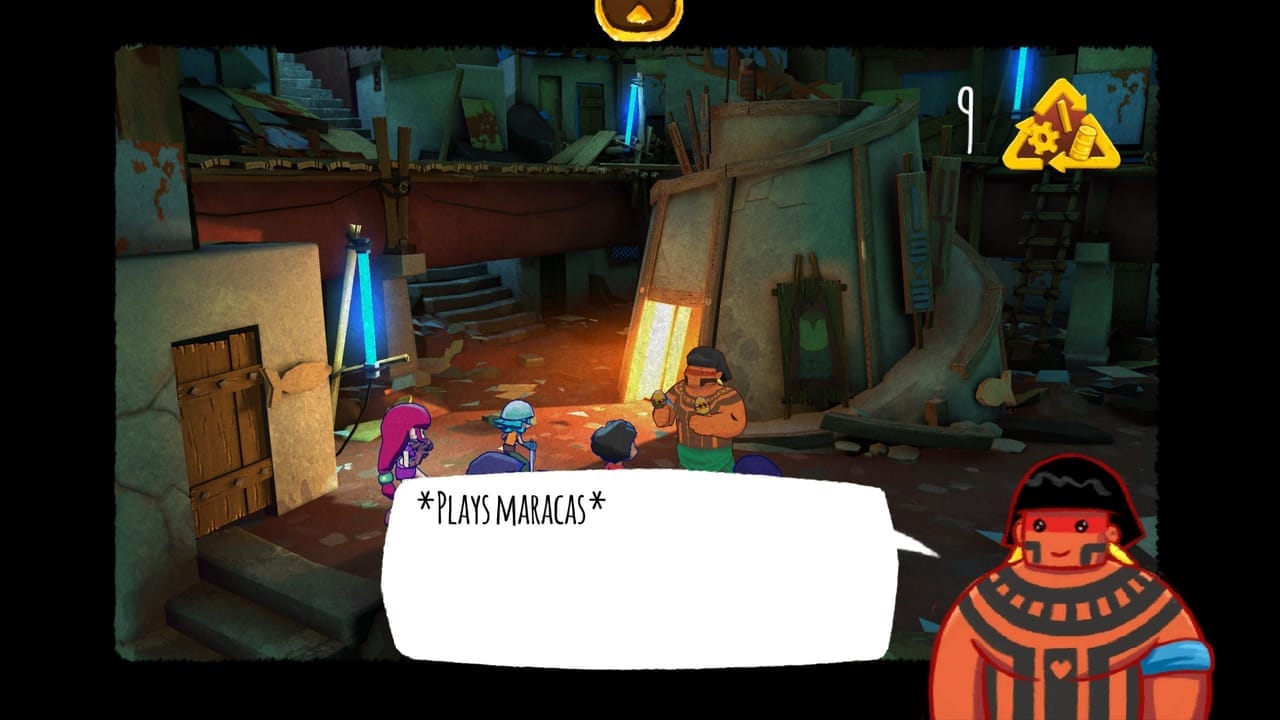
The cast of characters are all likable enough, and the bad guys are obviously corrupt and evil. The game won’t win any awards for its critical writing, but it suffices. You don’t really get a full party of four until the fourth chapter, and even then, those moments are fairly short-lived. Nate and Tlob are definitely the stars of the show, with the most focus going to them. The other two party members get their own development in the third and fourth chapters, and it was enough to hook me into their motivations and personalities. If anything, the characters and their interactions with each other might be the strongest part of the game.
A majority of your time will unfortunately be spent in turn-based combat. While there are some interesting systems that set up distinct roles for each character, the affair is bogged down by the incessant use of quick-time events and minigames. Want to attack someone? Click when the first ring meets the second ring. Want to heal an ally? Grab as many green sparkles as you can within the time limit. All these gestures have a mobile feel to them, baring the game’s origins for all to see. Nearly every action comes with some form of QTE, and it’s frankly a surprising relief when an ability just works on activation. If you fail, the ability either fizzles into a weaker form or doesn’t work at all. It’s really unfortunate when the tank needs a major heal but you fail to collect enough sparkles fill his health. When playing with the mouse, the cursor is extremely specific, making it easier than expected to mess up the minigames from time to time.
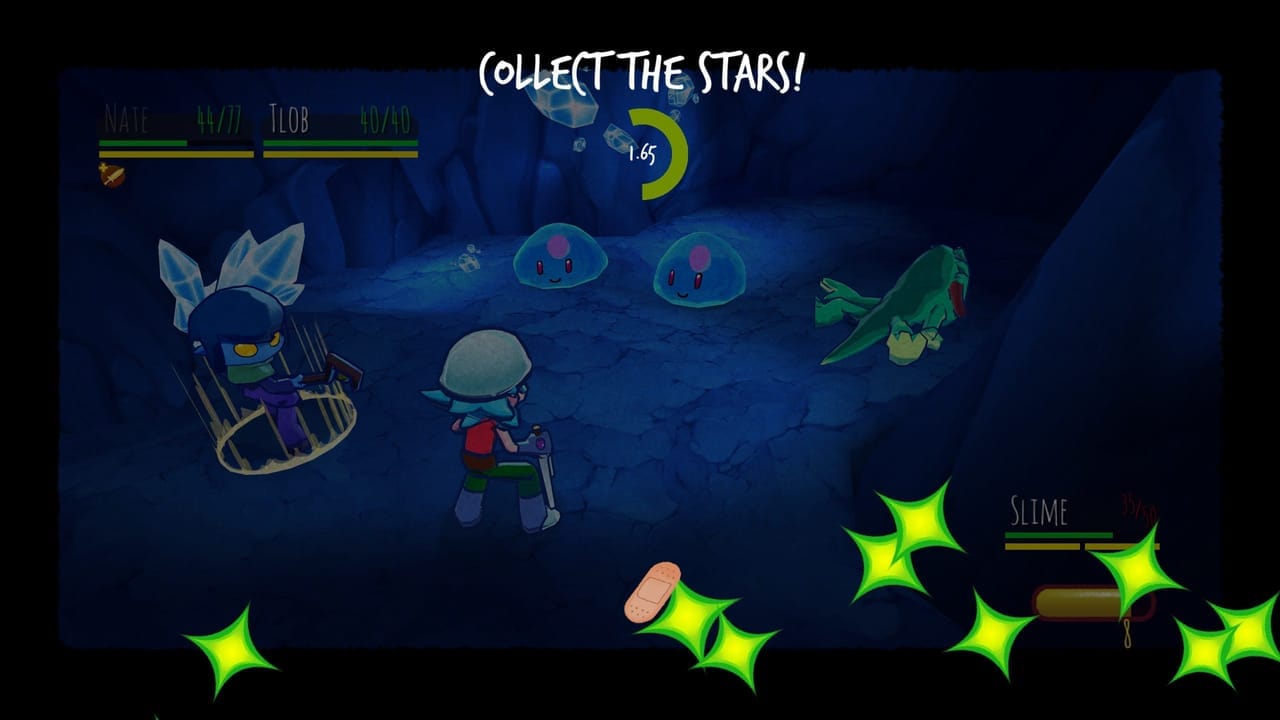
What’s worse is that the party shares the resource used to activate special skills. Called Spirit Points, they can only be earned when you take or land a hit. If both your party members hit an enemy and that enemy hits one of them, you gain three Spirit for that round. For a majority of the game, the party can only have 10 points total, and with some skills costing five or six points, it can feel pretty limiting for a long time. It isn’t until the last half of the fourth and final chapter that you gain not just one but two boosts to the Spirit bar, bringing the cap up to 30. It’s ludicrous that only at the end of the game does this resource become easier to use, especially with how critical skills can be in combat.
Every encounter is won either by attacking or forgiving the enemies. Attacking is fairly straightforward, and to forgive, every opponent must be stunned at the same time. The points in the story where you can choose to be merciful or aggressive affect what skills your characters get, with passive choices supporting forgiveness and combative ones helping with attacks. The way player choice can change the way combat works is fairly well executed, but in the grand scheme of things, it doesn’t feel like the opposite is true. In combat, all that matters is that I somehow incapacitated the enemy. The story carries on from there, and I can still choose to be merciful, despite the digital blood of countless foes on my hands.
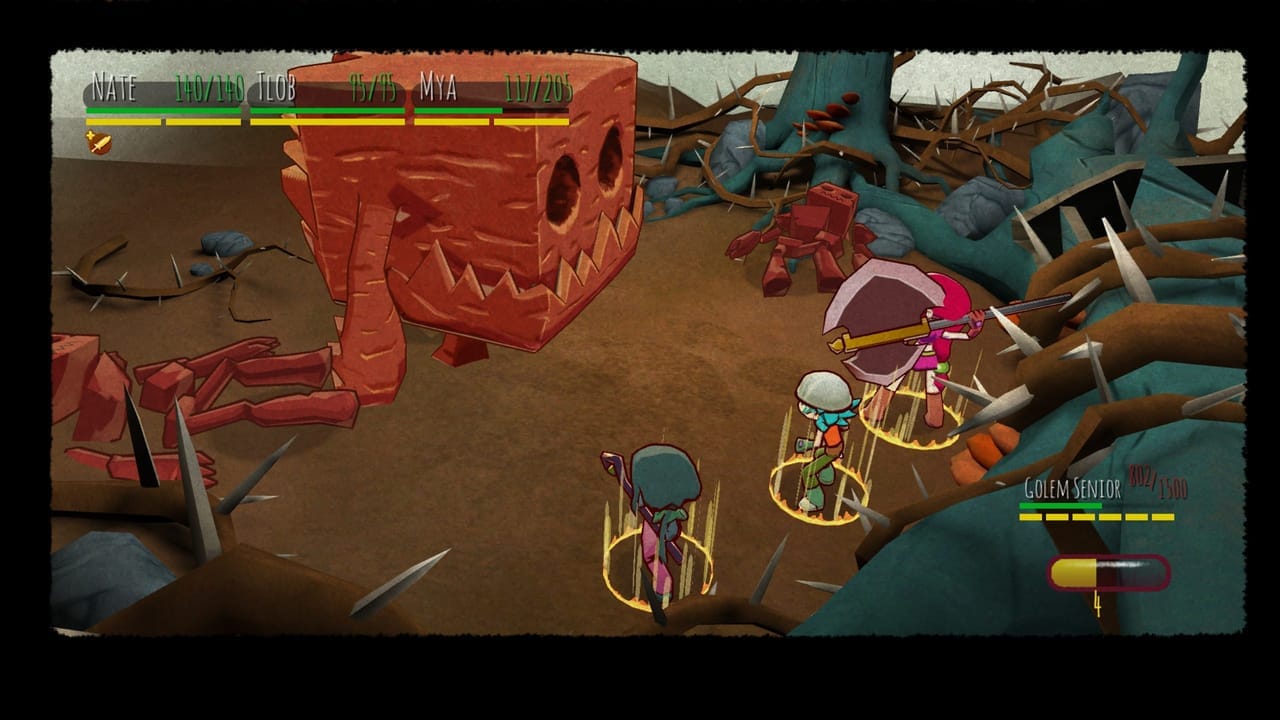
Another major part of the gameplay, Adventure Mode, is more reminiscent of the point-and-click style. You click on doors or pathways to move from panel to panel, all while grabbing items and hitting switches to progress. It’s a pretty straightforward process and doesn’t bring anything surprising to the table, but it’s a nice break to have between encounters. These sections are where the game’s charm really came out, taking full advantage of the comic-book medium to show different pathways or hidden nooks. These sections are one of the ways to find new gear for your party members to equip.
The loot in this game is as simple as it gets in RPGs. You can equip Armor, Armor +1, or the extravagant Armor +2. The whole system is full of plus signs, and without a marketplace to sell old equipment, inventory clutter becomes a concern around halfway through. Everyone gets a helmet, a piece of armor, and their unique weapon. Whenever you get a piece of loot with a higher plus number than what you’re wearing, you don’t need to think twice about what to do. The most interesting thing to consider regarding gear is who gets what rings. Although the rings are simple enough—the Power Ring gives you more strength while the Smart Ring gives you more intelligence, for example—deciding who wears what rings is the most you’ll have to think about in terms of equipment. And of course, even rings are subject to the +1 system.
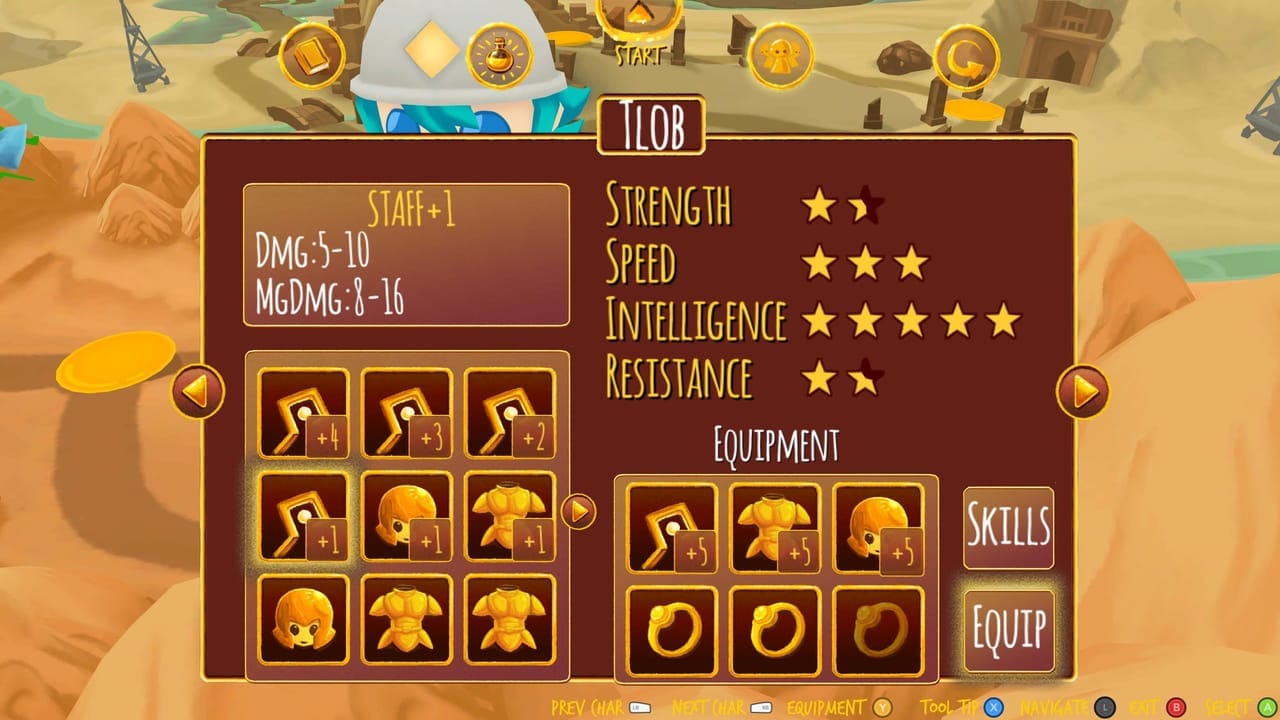
Rings are only obtainable through quests, the only other way to get loot besides Adventure Mode. Quests are extra missions you can do after every chapter, and each chapter comes with fifteen quests that must be done in order. The extra gear helps make fights in the next chapter somewhat more manageable, but the trouble is that these quests are purely a series of battles—in other words, tedious combative encounters. Each quest can have anywhere from one to five fights in a row. There’s no Adventure Mode to break up the endless monotony, and if you use any potions or if a character dies along the way, you don’t get the loot. Grinding out these quests could have been a great part of the experience, but it was just dull and uninteresting.
Spending time with the PC version of Light Apprentice makes one thing painfully apparent: This is a mobile game. The design philosophy behind all the QTEs are easily meant for tapping and swiping gestures, and the more pick-up-and-play nature of mobile gaming helps break up the repetition of combat. The port to PC failed to consider how to the mobile game design would translate to a satisfying experience on a keyboard or controller, especially with longer play periods. Although this game might be a solid choice for your phone, it’s hard to justify playing on Steam. Download the first chapter on your phone to see if the game is up your alley before considering sitting down at your computer for this one.
Our Light Apprentice review was conducted on PC via Steam with a code provided by the developers. The game is also available on iOS and Android devices.
Review Summary
It's painfully obvious that the game was initially a mobile game, and the PC port doesn't do much to accommodate for the new platform. The quick-time events that pervade the combat turn the game into a chore, and there isn't really any part that makes the grind worth it.
(Review Policy)Pros
- Charming Aesthetic
- Simple but Likable Characters
Cons
- Tedious Combat
- Forgettable Story
- Easily Cluttered Inventory
Have a tip, or want to point out something we missed? Leave a Comment or e-mail us at tips@techraptor.net
